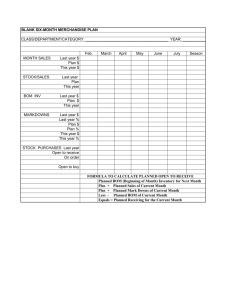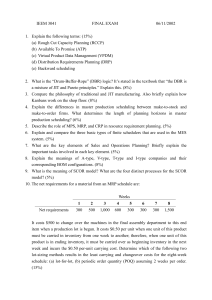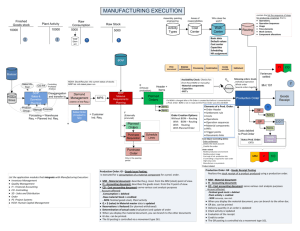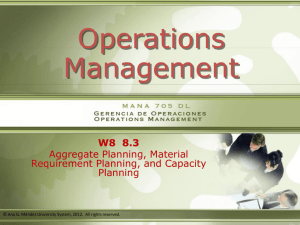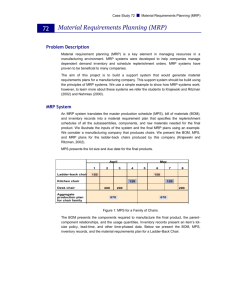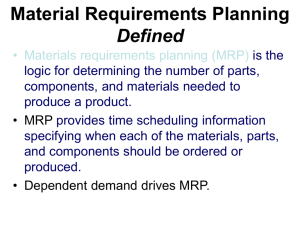MRP-classNotes
advertisement
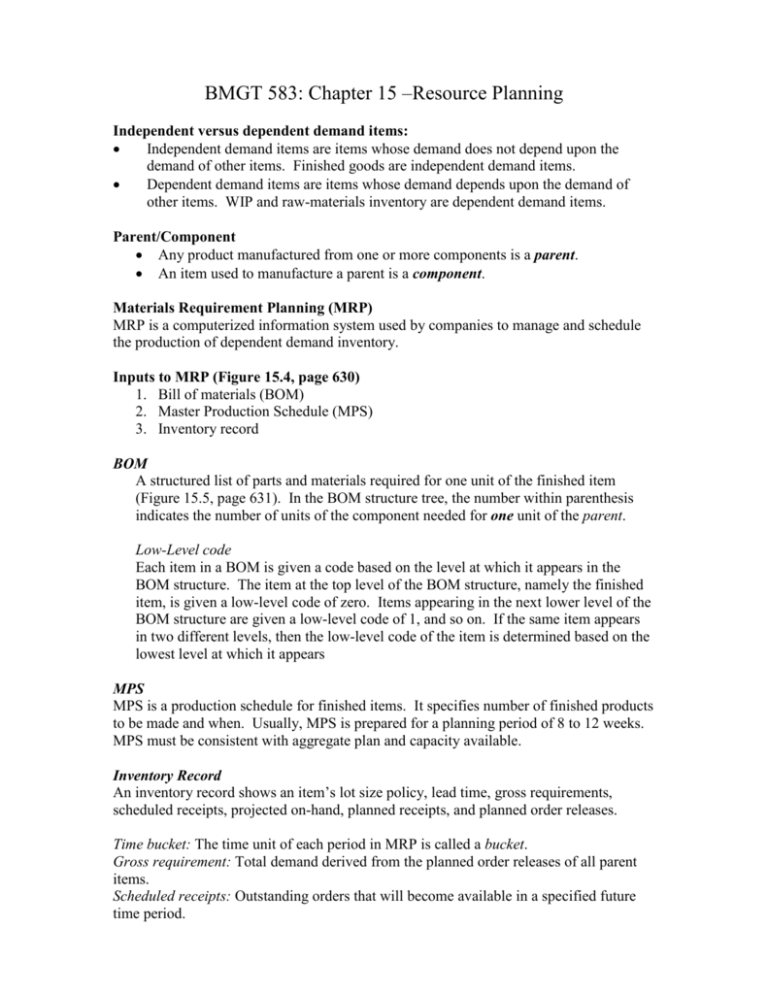
BMGT 583: Chapter 15 –Resource Planning Independent versus dependent demand items: Independent demand items are items whose demand does not depend upon the demand of other items. Finished goods are independent demand items. Dependent demand items are items whose demand depends upon the demand of other items. WIP and raw-materials inventory are dependent demand items. Parent/Component Any product manufactured from one or more components is a parent. An item used to manufacture a parent is a component. Materials Requirement Planning (MRP) MRP is a computerized information system used by companies to manage and schedule the production of dependent demand inventory. Inputs to MRP (Figure 15.4, page 630) 1. Bill of materials (BOM) 2. Master Production Schedule (MPS) 3. Inventory record BOM A structured list of parts and materials required for one unit of the finished item (Figure 15.5, page 631). In the BOM structure tree, the number within parenthesis indicates the number of units of the component needed for one unit of the parent. Low-Level code Each item in a BOM is given a code based on the level at which it appears in the BOM structure. The item at the top level of the BOM structure, namely the finished item, is given a low-level code of zero. Items appearing in the next lower level of the BOM structure are given a low-level code of 1, and so on. If the same item appears in two different levels, then the low-level code of the item is determined based on the lowest level at which it appears MPS MPS is a production schedule for finished items. It specifies number of finished products to be made and when. Usually, MPS is prepared for a planning period of 8 to 12 weeks. MPS must be consistent with aggregate plan and capacity available. Inventory Record An inventory record shows an item’s lot size policy, lead time, gross requirements, scheduled receipts, projected on-hand, planned receipts, and planned order releases. Time bucket: The time unit of each period in MRP is called a bucket. Gross requirement: Total demand derived from the planned order releases of all parent items. Scheduled receipts: Outstanding orders that will become available in a specified future time period. Projected on-hand inventory: An estimate of the inventory available on-hand at the end of a given period after satisfying the gross requirement. Projected on-hand inventory (POI) for end of week t = (POI for end of week t-1) + (Scheduled receipts for week t) – (Gross requirement for week t) Planned Order Receipt: Planned order receipt quantity such that the POI does not drop below zero. Three methods are discussed for determining this quantity, (i) Fixed Order Quantity, (ii) Periodic Order Quantity, and (iii) Lot for lot. These are also called Lot Sizing rules. Planned Order Releases: A planned order release indicates when an order for a specified planned order receipt must be released. Typically, the quantity of the planned order release will be exactly the same as the quantity as planned order receipt. However, the release date is determined by subtracting the receipt date by the lead time. Input/Output Control chart I/O Control chart tracks (i) deviation between planned and actual inputs and outputs, and (ii) backlog. Backlog = Previous backlog + Actual input – Actual output
